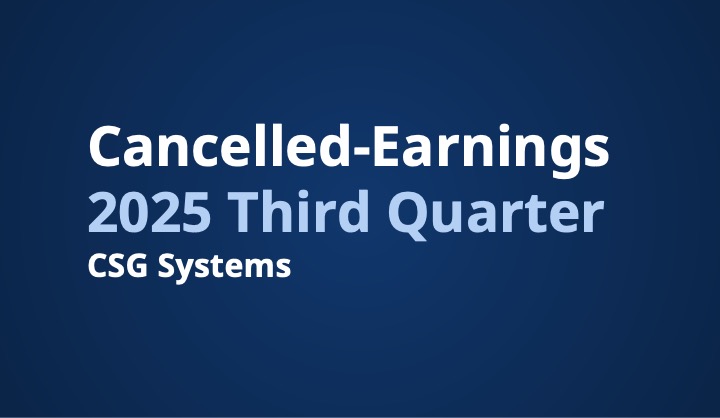Key takeaways
- Cloud-native microservices architecture enables independent scaling and prevents single points of failure that constrain telecommunications operations
- TM Forum Open API compliance eliminates vendor lock-in and reduces integration maintenance overhead compared to proprietary approaches
- Complex bundle configuration capabilities must handle multi-site, multi-partner scenarios through intuitive interfaces rather than requiring custom development
- Real-time financial visibility and margin protection prevent unprofitable deals from moving forward while maintaining deal velocity
- Enterprise-grade security with SOC 2 Type II compliance and zero-trust architecture protects telecommunications B2B transactions without slowing operations
1. Cloud-native microservices architecture
A capable CPQ platform must be designed for cloud deployment from the ground up, not retrofitted from legacy monolithic systems. The architectural difference matters more than deployment location.
Monolithic CPQ systems create single points of failure that prevent organizations from effectively leveraging cloud economics. When demand spikes occur during quarter-end or major sales campaigns, the entire system must scale together—consuming resources unnecessarily and creating performance bottlenecks. When individual components need updates, the entire platform requires maintenance windows that disrupt operations
Cloud-native architecture provides operational advantages that monolithic systems cannot match:
- Microservices design enables independent component scaling based on actual demand patterns
- Container-ready deployment supports modern DevOps practices and automated provisioning
- Infrastructure-as-code compatibility allows version-controlled environment management
- Multi-tenant architecture balances security isolation with operational efficiency
Organizations with cloud-native CPQ platforms deploy updates faster, scale resources more efficiently and maintain higher availability compared to competitors constrained by monolithic architectures. This operational agility translates directly into competitive advantage when market conditions change or demand fluctuates unexpectedly.
2. TM forum open API compliance
Industry-standard APIs are essential for avoiding vendor lock-in and the expensive custom integrations that create long-term technical debt. A best-fit CPQ platform should support certified TM Forum Open APIs with documented implementations, not future compliance promises or proprietary alternatives that keep you stuck in single-vendor ecosystems.
Standards-based integration delivers three critical advantages. First, implementation complexity decreases because integration patterns already exist rather than requiring custom development for each connection point. Second, long-term maintenance costs drop substantially—standards-compliant connections remain stable during system upgrades, unlike brittle custom integrations that break whenever platforms evolve. Third, technology evolution becomes feasible because you can adopt new capabilities or replace individual systems without disrupting your entire architecture.
Critical API categories your CPQ platform must support:
- Product catalog management interfaces that synchronize with billing and fulfillment systems
- Customer management connectivity that maintains data consistency across platforms
- Order management and workflow automation that eliminates manual handoffs
- Partner ecosystem integration that handles revenue sharing and wholesale pricing
Organizations with standards-compliant CPQ avoid the maintenance overhead and vendor dependency that affect companies using proprietary integration approaches. When TM Forum APIs evolve or when you need to integrate new systems, your implementation adapts without requiring extensive redevelopment.
3. Complex bundle configuration without custom development
Telecommunications B2B deals involve multi-site, multi-partner, multi-service configurations that generic CPQ platforms struggle to handle. Your system must be able to configure complex bundles through intuitive interfaces, rather than requiring custom development for each scenario. If sales engineers need IT resources to configure standard deal types, your platform isn’t fit for purpose.
Generic CPQ systems assume simple product hierarchies and straightforward bundling rules. Telecommunications deals violate these assumptions. A single enterprise connectivity package might span dozens of locations across different network coverage areas, involve multiple partner circuits where you lack owned infrastructure, require bandwidth allocations that depend on actual network capacity, and include service-level agreements that vary by site characteristics.
Essential bundling capabilities your platform must provide:
- Dynamic pricing that adjusts automatically based on bundle composition and partner availability
- Multi-location deployments with site-specific configuration management and validation
- Usage-based pricing combined with subscription models and one-time fees
- Dependency management between services and hardware components
- Partner service integration with automated margin calculations and revenue sharing
When sales teams can configure complex offerings in minutes instead of spending hours on manual validation, deal velocity increases substantially. When configurations automatically account for partner dependencies and network constraints, implementation problems decrease. When pricing reflects actual delivery costs rather than static assumptions, margin protection improves. Together, these capabilities turn CPQ from a back-office tool into a strategic growth engine for telcos.
4. Real-time financial visibility and margin protection
Your configure, price, quote software should provide real-time visibility into deal margins throughout the entire quoting process to support sales velocity and keep errors to a minimum. Achieving this requires integrated financial management, not post-processing reports that sales teams review after deals close.
Generic CPQ systems calculate pricing but often lack visibility into actual costs—especially when deals involve partner services, third-party products or custom deployment requirements. Sales teams quote prices based on outdated cost assumptions, while finance discovers margin problems months later during billing reconciliation. This disconnect between quoted prices and actual profitability erodes business results.
Critical financial capabilities your platform must deliver:
- Real-time margin calculation across all bundle components as configurations change
- Automated cost tracking for partner services and third-party products
- In-flight order change management that maintains pricing accuracy when deals evolve
- Profitability analysis that accounts for deployment and ongoing operational costs
When pricing changes during deal negotiation—which happens frequently in complex B2B sales—the system must automatically recalculate margins and identify potential revenue leakage before quotes reach customers. This real-time financial intelligence enables informed decision-making during negotiations rather than discovering margin problems after implementation begins.
Organizations with integrated financial visibility close more profitable deals because sales teams see margin implications immediately. They avoid unprofitable deals that generic systems allow to proceed because cost visibility comes too late.
5. Zero-downtime deployment and DevOps integration
Modern IT operations require CPQ platforms that integrate with CI/CD pipelines and support automated deployment processes. Your system must enable continuous updates without service disruption. If platform updates require maintenance windows that affect sales operations, you’re working with legacy architecture.
Essential DevOps capabilities your platform must provide:
- Blue-green deployment support for zero-downtime updates and seamless rollbacks
- Automated testing frameworks with comprehensive coverage across all modules
- Infrastructure-as-code compatibility with standard tools like Terraform and Kubernetes
- Rollback capabilities that restore previous versions quickly when issues arise
Organizations with modern deployment capabilities respond to market opportunities faster than competitors constrained by legacy processes. When you can deploy pricing changes, new product configurations or integration updates without scheduling maintenance windows, your business agility increases substantially. This operational flexibility translates directly into competitive advantage when market conditions change or customer requirements evolve.
6. Enterprise-grade security and compliance framework
Telecommunications B2B transactions require security architecture that meets enterprise standards. Your CPQ platform should include built-in compliance capabilities, rather than treating security as an afterthought that is addressed through custom development.
Security requirements your platform must meet:
- SOC 2 Type II compliance with third-party verification and regular audits
- Zero-trust architecture with identity verification for all system interactions
- Automated audit trails with compliance-ready documentation for regulatory reviews
- Role-based access controls with separation of duties enforcement
- End-to-end encryption for data transmission and storage at rest
Required regulatory compliance support:
✓ GDPR data protection with automated privacy controls and data handling procedures
✓ Financial regulatory requirements with automated workflows and approval gates
✓ Telecommunications-specific compliance built into platform design rather than bolted on
✓ International security standards including ISO 27001 implementation
The security framework directly impacts operational velocity. Automated security controls enable rapid quote-to-cash cycles without compromising risk management. Manual security reviews that delay every transaction create bottlenecks that affect competitive positioning. Purpose-built platforms balance security requirements with business speed.
7. Proven scalability under telecommunications complexity
Your configure, price, quote software must perform under actual telecom workloads, not theoretical benchmarks. Vendor performance claims mean nothing if they’re based on simple product configurations rather than the multi-site, multi-partner complexity your business actually handles.
Performance requirements your platform must deliver:
- High concurrent user support without performance degradation during peak periods
- Fast response times for complex multi-site configurations involving partner validation
- Proven uptime guarantees with automatic failover capabilities
- Real-time data synchronization across multiple integrated systems
One NZ’s success with CSG’s CPQ software
One NZ transformed the way it engages customers and brings products to market with CSG’s telco-specific CPQ platform:
- Customer interaction optimization: 95% of interactions now digital
- Customer satisfaction improvement: Net Promoter Score increased 110% (from 30 to 63)
- Product launch acceleration: New functionality and products launch in days rather than months
These results show how a purpose-built CPQ platform doesn’t just handle telecom complexity—it turns it into a competitive advantage, enabling faster growth, happier customers, and more agile product launches.
The Cost of compromise
Picking configure, price, quote software without these essential capabilities creates technical debt that compounds over time. Organizations end up spending significant IT resources on system maintenance, custom integration development and workaround support rather than innovation initiatives that drive actual business value.
When sales teams can’t configure complex offerings efficiently, it gives competitors with modern CPQ platforms the chance to capture market opportunities. Revenue leakage from manual processes and integration errors often exceeds platform licensing costs within the first year of implementation. The “savings” from choosing cheaper generic systems evaporate quickly when you account for customization expenses, lost deals and margin erosion.
Smart IT leaders recognize that purpose-built platforms deliver a better total cost of ownership than generic solutions that require extensive customization. The calculation always favors platforms designed for telecommunications complexity when you account for implementation costs, ongoing maintenance overhead and business impact from system limitations.
Pick configure price quote software that actually works
The telecommunications industry requires CPQ platforms that are tailored to its unique operational requirements. Generic systems that work for other industries will fail when confronted with your complexity.
Recommended evaluation framework priorities:
- Architecture verification through technical demonstrations using actual business scenarios rather than vendor-selected examples
- Standards compliance confirmation with documented implementations rather than roadmap promises
- Performance validation under telecommunications-specific complexity requirements
- Security assessment including compliance documentation and audit results
- Implementation track record with telecommunications clients of similar complexity
The evaluation process should include hands-on testing with your actual product catalog and integration requirements. Vendors unable to handle your specific telecommunications scenarios during evaluation will struggle during implementation. Don’t accept promises that capabilities will be delivered “soon” or that customization can address gaps—these become expensive technical debt.
Establish high-performing CPQ operations
CSG Quote & Order delivers all seven essential capabilities through architecture specifically designed for telecommunications operations. With proven implementations across diverse telecommunications environments, the platform eliminates technical debt while enabling business growth.
Discover how much you could save and earn with our CPQ solution.










